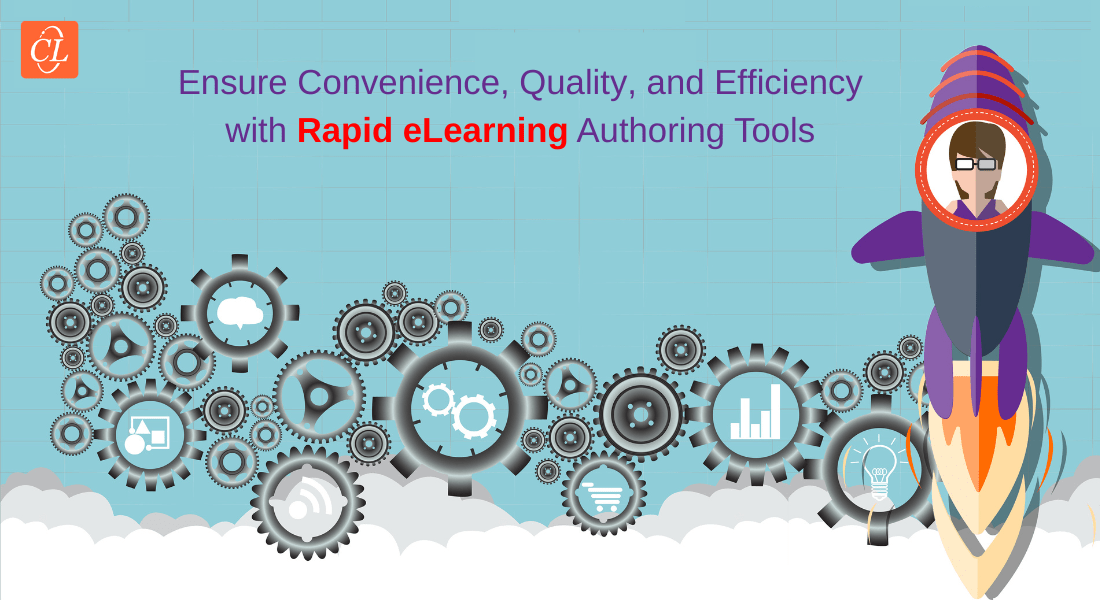eLearning Authoring Tools: What If They Didn’t Exist?

In today's digital age, eLearning has become an indispensable part of our lives. From online courses to training sessions, it offers a convenient and accessible way to learn. The backbone of eLearning is eLearning authoring tools, which empower developers to create engaging and interactive digital content. These tools allow learners to access courses anytime, anywhere, while organizations can deliver content in a more efficient and engaging manner. But what if eLearning authoring tools didn't exist? This blog will explore the challenges developers would face without them, highlighting the crucial role these tools play in designing effective training modules.
→ Download Now: Have You Met the 4 Rs of Rapid eLearning? [eBook]
Table of Contents
What If eLearning Authoring Tools Didn’t Exist?

Creating an eLearning course from scratch without eLearning authoring tools would be a challenging task. Instructional designers developing the online learning modules would need to create everything from the ground up, from coding the interface to designing the course’s content. This would be a time-consuming process, taking up valuable resources that could be better used in improving the course’s quality. Creating interactive elements such as quizzes and assessments that engage learners without the help of authoring tools could be difficult. Interactive elements are an essential part of an engaging eLearning experience, and without them, learners may not be as motivated to complete the course.
Without authoring tools, maintaining a consistent design across the course could be a challenging task. Inconsistent design elements can be distracting and may negatively impact the learners’ experience. Tracking learners’ progress and measuring the course’s effectiveness without the help of authoring tools would be difficult. This information is essential for instructors and course creators to understand how learners are progressing and make adjustments to improve the course. Also, imagine you have to use different software applications for multiple tasks such as template customizations, eLearning translations, designing visual assets, editing videos, and much more when eLearning authoring tools can just do them all, quite irritating isn’t it?
Why are eLearning Authoring Tools Crucial to Design Training Modules?
Here are a few benefits they provide:
- Interactive courses
- Consistent course design
- Collaborative authoring
- Learning analytics
What Makes eLearning Authoring Tools Important?
An eLearning authoring tool is a software application that enables developers to create interactive and engaging eLearning courses without requiring extensive coding skills. eLearning authoring tools provide pre-built templates, assets, and interactive elements that can be customized to fit the eLearning course’s design. This saves developers a significant amount of time and resources, allowing them to focus on improving the course’s quality rather than the technical aspects of course design.

Have You Met the 4 Rs of Rapid eLearning?
Accelerate Learning and Maximize its Impact With the 4 Rs of Rapid eLearning!
4Rs of rapid eLearning:
- Redesign
- Record
- Rebuild
- Republish
Here are some reasons why eLearning authoring tools are essential in eLearning course design.
1. Interactive Courses
eLearning authoring tools allow developers to add interactive elements such as quizzes, simulations, and videos to their courses. There are various types of ready-to-use templates and a huge multimedia library to ensure no sort of interactivity is compromised. These elements create an engaging learning experience for the learners and help them retain information better.
2. Consistent Course Design
eLearning authoring tools provide a consistent design across the course, ensuring an organized and cohesive learning experience for the learners. This consistency helps learners navigate the course more efficiently and keeps them engaged throughout. Even when a user decides to change the device, the responsive design feature maintains the consistency of corporate eLearning modules.
3. Collaborative Authoring
This feature enables course creators to divide the workload and work on different sections of a course simultaneously, making the content creation process faster and more efficient. Collaborative authoring also facilitates knowledge sharing and brainstorming, which can lead to better course content and more innovative ideas. With this feature, teams can work together from different locations and contribute to a course in real-time, making it an essential tool for remote work environments.
4. Learning Analytics
eLearning authoring tools provide analytics and reporting features that enable developers to track learners’ progress and measure the course’s effectiveness. This information is essential for instructors and course creators to understand how learners are progressing and make adjustments to improve the course. Usually, these features come with an LMS but there are modern tools that have all these learning analytics services integrated altogether to help developers work on a single tool suite seamlessly.
How Do You Find the Ideal eLearning Authoring Tool for You? [VIDEO]
Wrapping Up!
eLearning authoring tools are essential in eLearning course design as they save time, enable interactivity, ensure consistent course design, and provide tracking and reporting features. Without these tools, developers would encounter several problems such as a time-consuming development process, limited interactivity, inconsistent course design, and inadequate tracking and reporting. Thus, eLearning authoring tools are a must-have for instructional designers who want to create engaging and effective rapid eLearning courses.
Editor's note: This post was originally published in April 11, 2023 and has been updated for comprehensiveness.






